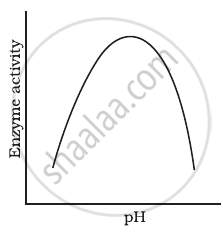Advertisements
Advertisements
Question
Nucleic acids exhibit secondary structure, justify with example.
Solution
We know that when a long chain of polymer is arranged as a helix: the helix is called a secondary structure. We also know that DNA is a double helix structure. Even RNA forms a single helix. Both DNA and RNA are nucleic acids. Since they show helices; they exhibit secondary structure.
APPEARS IN
RELATED QUESTIONS
Illustrate a glycosidic, peptide and a phospho-diester bond.
Identify the substances having glycosidic bond and peptide bond, respectively in their structure:
Number of hydrogen bonds formed between guanine and cytosine is:
A unit composed of sugar and nitrogen base linked by glycosidic bond is ______.
Ester linkages occur in ______.
Select an appropriate chemical bond among ester bond, glycosidic bond, peptide bond and hydrogen bond and write against the following.
Polysaccharide ______
Select an appropriate chemical bond among ester bond, glycosidic bond, peptide bond and hydrogen bond and write against the following.
Fat ______
Select an appropriate chemical bond among ester bond, glycosidic bond, peptide bond and hydrogen bond and write against the following.
Water ______
Enzymes are proteins. Proteins are long chains of aminoacids linked to each other by peptide bonds. Aminoacids have many functional groups in their structure. These functional groups are, many of them at least, ionisable. As they are weak acids and bases in chemical nature, this ionization is influenced by pH of the solution. For many enzymes, activity is influenced by surrounding pH. This is depicted in the curve below, explain briefly.

Nucleic acids exhibit secondary structure. Describe through Wetson- Crick Model.
